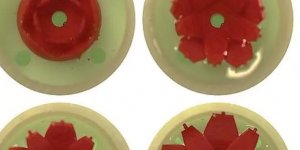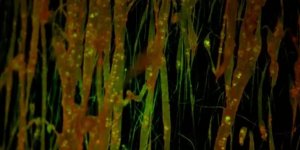| News / Tech News |
Researchers grow precise arrays of nanoLEDs
Halide perovskites are a family of materials that have attracted attention for their superior optoelectronic properties and potential applications in devices such as high-performance solar cells, light-emitting diodes and lasers.

A new platform enables researchers to "grow" halide perovskite nanocrystals with precise control. Photo: Sampson Wilcox/MIT RLE
These materials have largely been implemented into thin-film or micron-sized device applications. Precisely integrating these materials at the nanoscale could open even more remarkable applications, like on-chip light sources, photodetectors and memristors.
However, achieving this integration has remained challenging because this material can be damaged by conventional fabrication and patterning techniques.
To overcome this hurdle, Massachusetts Institute of Technology (MIT) researchers created a technique that allows individual halide perovskite nanocrystals to be grown on-site where needed with precise control over location, to within less than 50 nanometers (A sheet of paper is 100,000 nanometers thick.).
The size of the nanocrystals can also be precisely controlled through this technique, which is important because size affects their characteristics.
Since the material is grown locally with the desired features, conventional lithographic patterning steps that could introduce damage are not needed.
The technique is also scalable, versatile and compatible with conventional fabrication steps, so it can enable the nanocrystals to be integrated into functional nanoscale devices.
The researchers used this to fabricate arrays of nanoscale light-emitting diodes (nanoLEDs) — tiny crystals that emit light when electrically activated.
Such arrays could have applications in optical communication and computing, lensless microscopes, new types of quantum light sources, and high-density, high-resolution displays for augmented and virtual reality. (U.S. National Science Foundation)
YOU MAY ALSO LIKE





